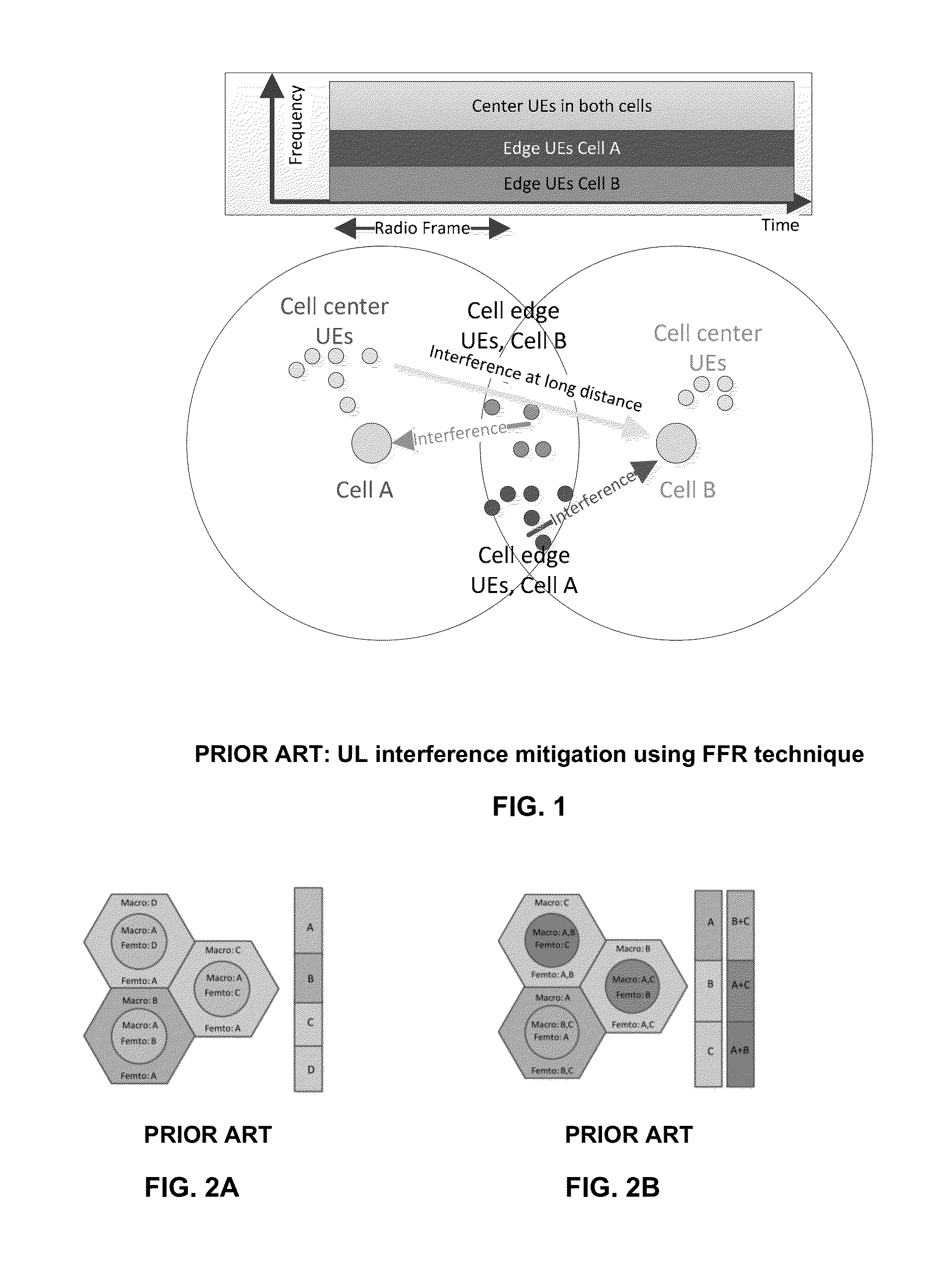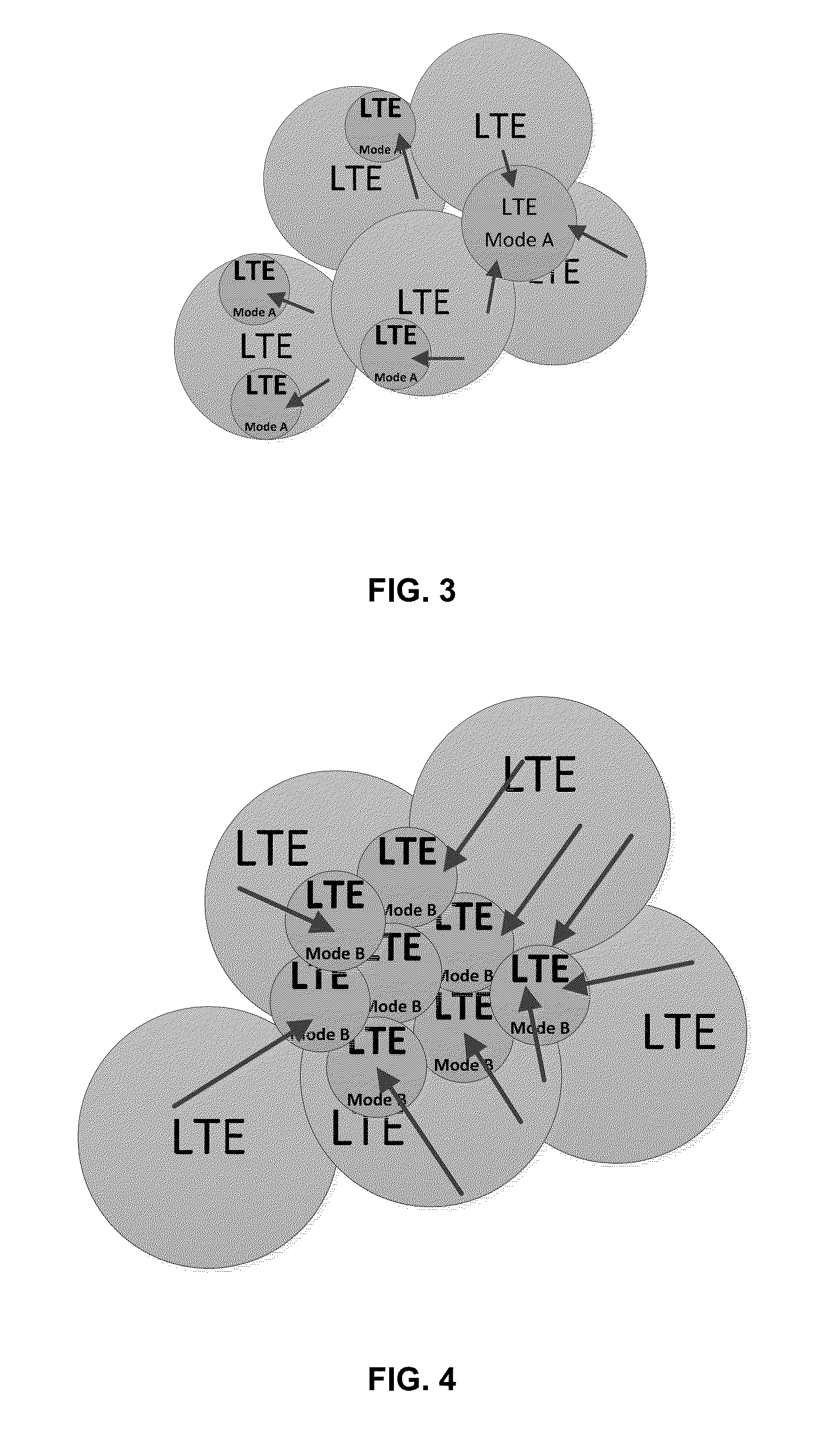Method and system for dynamic allocation of resources in a cellular network
a technology of dynamic allocation and cellular network, applied in the direction of criteria allocation, digital transmission, transmission path sub-channel allocation, etc., can solve the problems of limiting the x2-based icic solution to the area, if not impossible, and the requirement of having one vendor's equipment too restrictive,
- Summary
- Abstract
- Description
- Claims
- Application Information
AI Technical Summary
Benefits of technology
Problems solved by technology
Method used
Image
Examples
Embodiment Construction
[0060]In this disclosure, the term “comprising” is intended to have an open-ended meaning so that when a first element is stated as comprising a second element, the first element may also include one or more other elements that are not necessarily identified or described herein, or recited in the claims.
[0061]In the following description, for the purposes of explanation, numerous specific details are set forth in order to provide a better understanding of the present disclosure by way of examples. It should be apparent, however, that the present disclosure may be practiced without these specific details.
[0062]Let us consider a particular example of deploying eNBs in a HetNet, which comprises small cells (i.e. metro cells), wherein the eNBs are configured to operate in one of the following two modes:
TABLE 1ModeDefinitionMode A (Prior art)The MLB dSON function is disabled by thecSON over Itf-N. The cSON application directlymanages the eNB parameters over Itf-N as specifiedin 3GPP TS 2...
PUM
 Login to View More
Login to View More Abstract
Description
Claims
Application Information
 Login to View More
Login to View More - R&D
- Intellectual Property
- Life Sciences
- Materials
- Tech Scout
- Unparalleled Data Quality
- Higher Quality Content
- 60% Fewer Hallucinations
Browse by: Latest US Patents, China's latest patents, Technical Efficacy Thesaurus, Application Domain, Technology Topic, Popular Technical Reports.
© 2025 PatSnap. All rights reserved.Legal|Privacy policy|Modern Slavery Act Transparency Statement|Sitemap|About US| Contact US: help@patsnap.com



